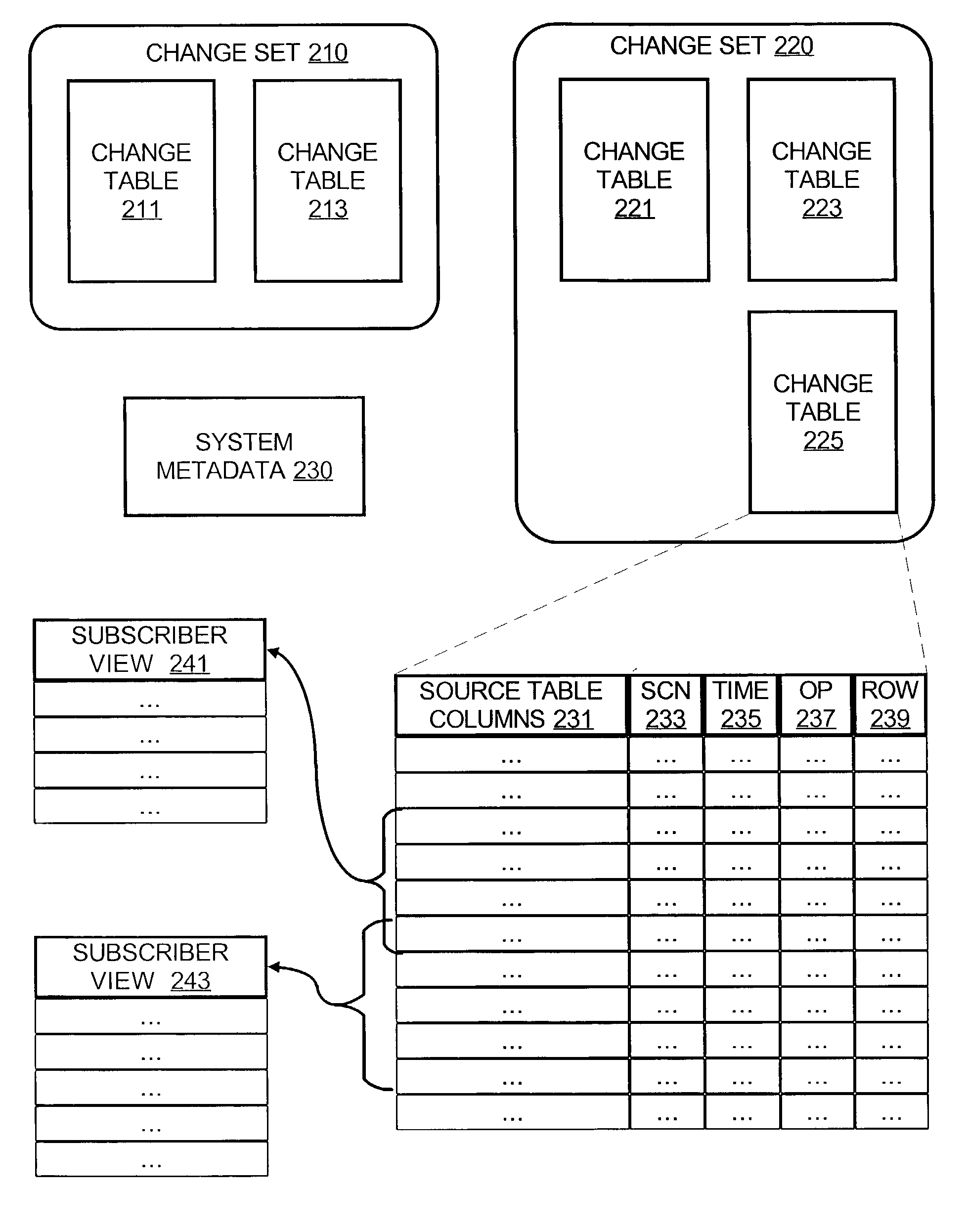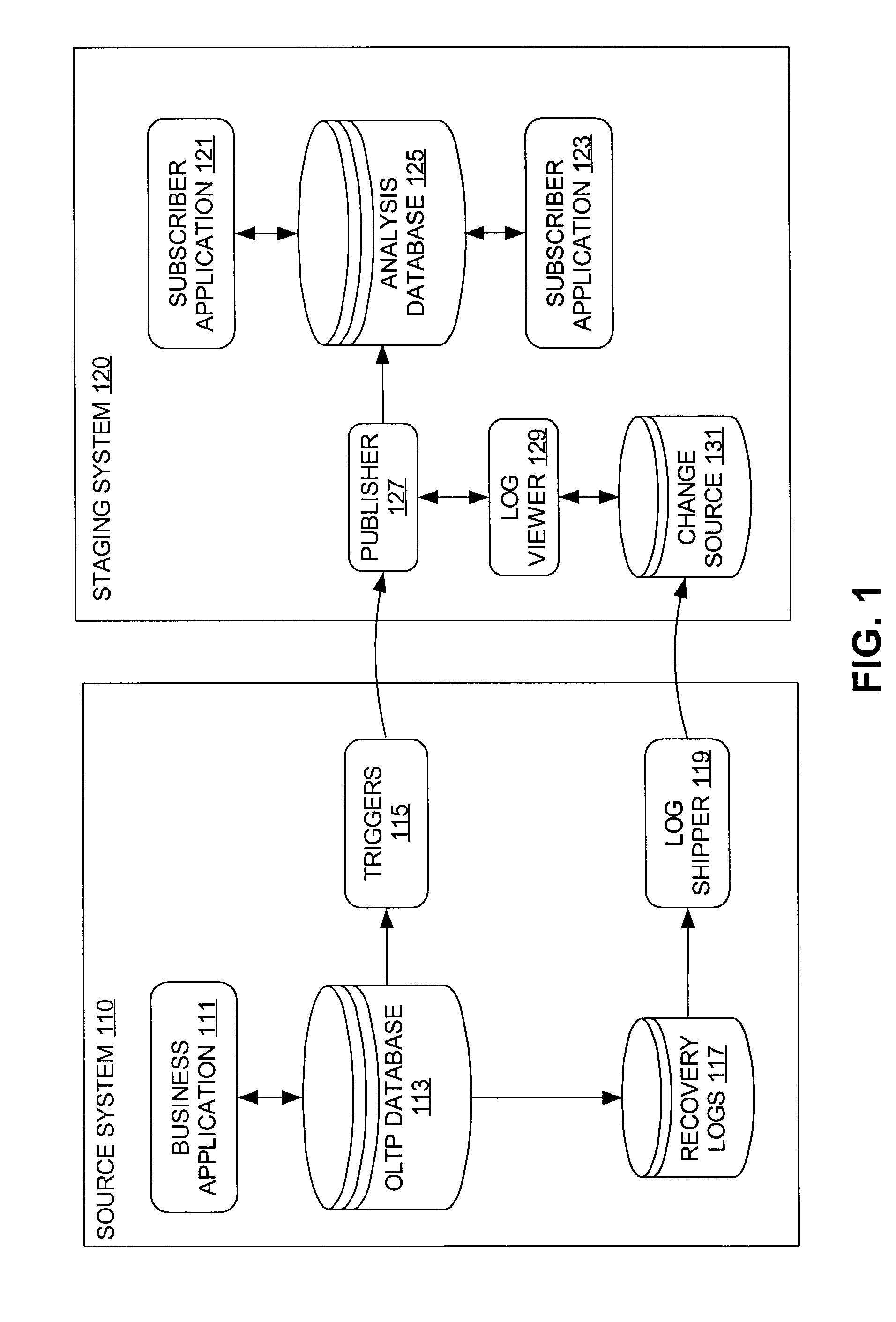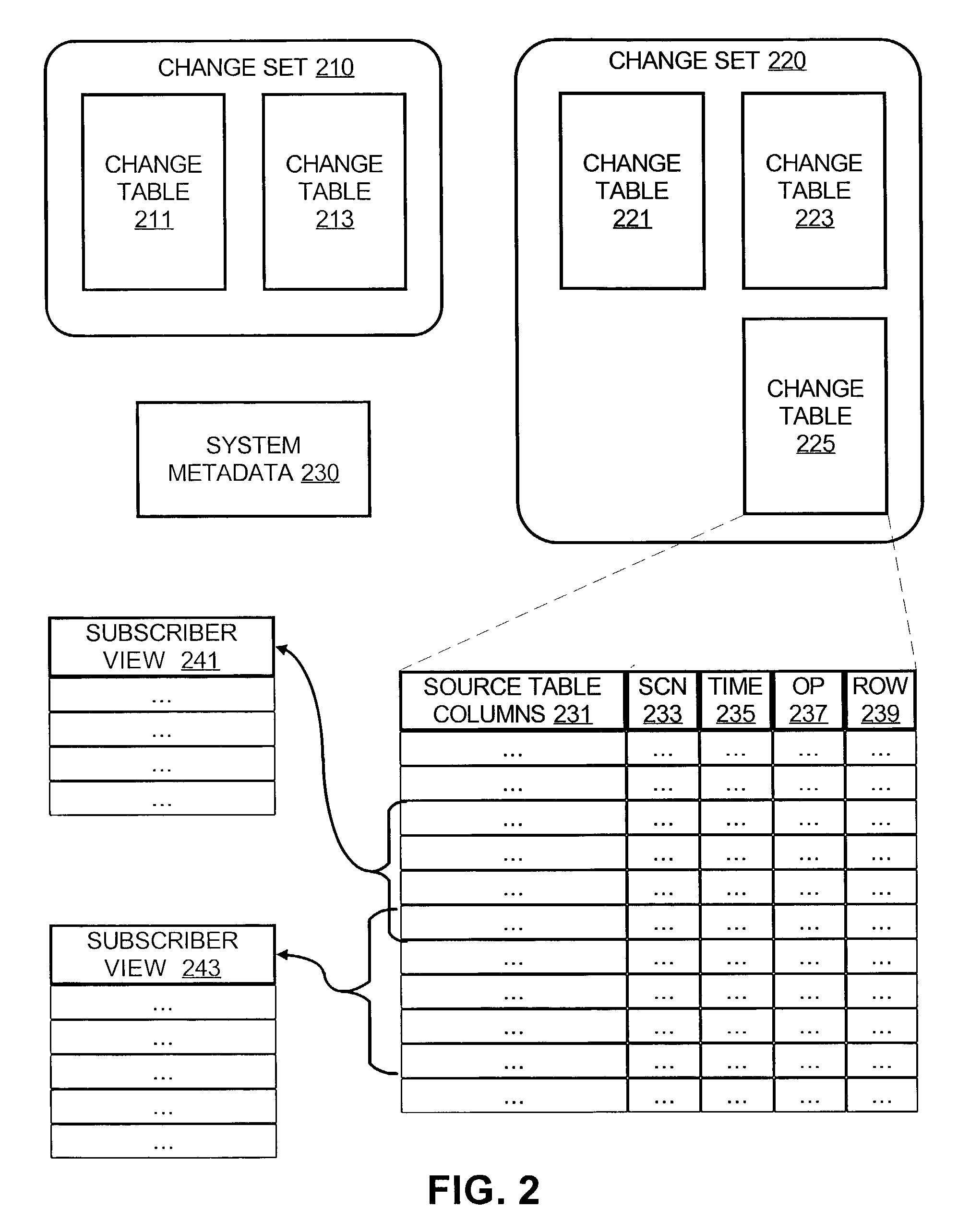Method and apparatus for change data capture in a database system
a database system and change data technology, applied in the field of database systems, can solve the problems of cumbersome loading mechanism, cumbersome data extraction, cumbersome conventional data extraction, transport, etc., and achieve the effect of complicating the task
- Summary
- Abstract
- Description
- Claims
- Application Information
AI Technical Summary
Benefits of technology
Problems solved by technology
Method used
Image
Examples
working example
[0052]FIGS. 5A, 5B, 5C, 5D, 5E, and 5F show a sequence of phases of a working example that illustrates how one embodiment of the publication-subscription model operates. In FIG. 5A, a change table 500 contains four rows 501, 502, 503, 504 of change data. A first subscriber application 121 activates a subscription to change table 500 (step 401), extends the subscription window to the present (step 403), and obtains a subscriber view 510 (step 405). Accordingly, the first subscriber application 121 is able to process the four rows 501, 502, 503, 504 (step 407).
[0053]Next, in FIG. 5B, additional change data, comprising rows 505, 506, arrives and is added to the change table 500 (step 307). Because the first subscriber application 121 is currently working with the subscriber 510 based on its subscription window, the first subscriber application 121 does not see the additional change data 505, 506 in the change table 500. Thus, the first subscriber application 121 is free to make as many...
PUM
 Login to View More
Login to View More Abstract
Description
Claims
Application Information
 Login to View More
Login to View More - R&D
- Intellectual Property
- Life Sciences
- Materials
- Tech Scout
- Unparalleled Data Quality
- Higher Quality Content
- 60% Fewer Hallucinations
Browse by: Latest US Patents, China's latest patents, Technical Efficacy Thesaurus, Application Domain, Technology Topic, Popular Technical Reports.
© 2025 PatSnap. All rights reserved.Legal|Privacy policy|Modern Slavery Act Transparency Statement|Sitemap|About US| Contact US: help@patsnap.com



